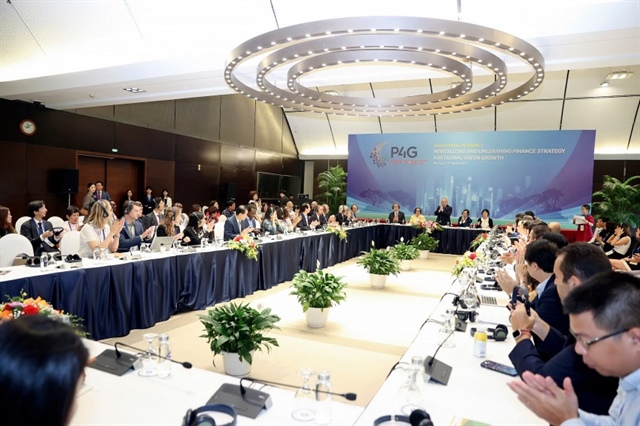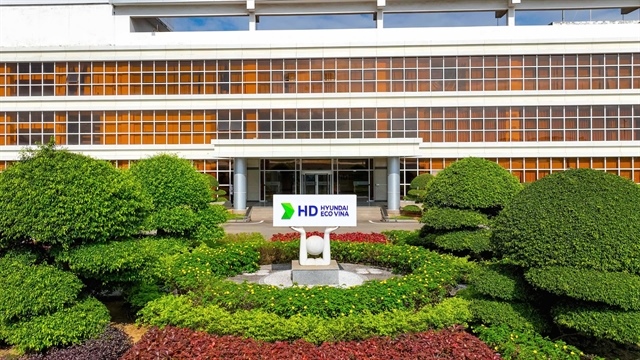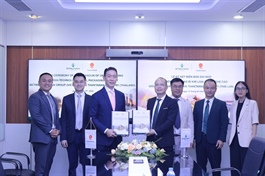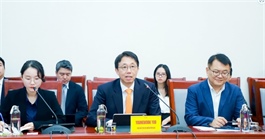Revitalising and unleashing finance strategy for global green growth
Revitalising and unleashing finance strategy for global green growth
At the fourth Partnering for Green Growth and the Global Goals 2030 (P4G) Summit, a ministerial panel session took place on April 17 to analyse capital demand and the development of green financial markets in various countries.
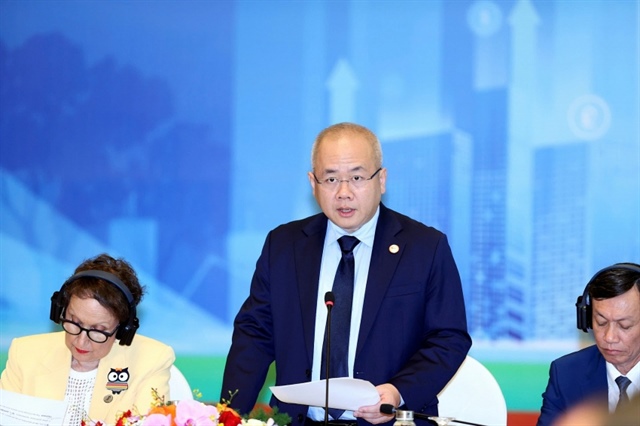
Deputy Minister of Finance Do Thanh Trung |
Deputy Minister of Finance Do Thanh Trung highlighted the strategic importance of green growth for Vietnam and the international community. “Green growth is an irreversible trend, a prerequisite to ensure sustainable development and enhance resilience to climate change,” he emphasised.
The Vietnamese government has demonstrated its determination in the direction of green growth through participating in international commitments on sustainable development and climate change, like the 2030 Agenda for Sustainable Development and the Paris Agreement on Climate Change.
It has also issued the National Action Plan on Green Growth, which has achieved positive results in all three sectors of the economy. In agriculture, in 2023, the organic farming area increased more than four times to nearly 495,000 hectares compared to 2016.
In terms of industry and energy, Vietnam's electricity elasticity/GDP decreased from 1.9 from 2011-2015 to 1.25-1.3 from 2017-2019, and then 1.07 in 2020. It finished below 0.5 last year.
In services, green services are increasingly highlighted in environmental conservation and protection of natural landscapes. Many types of service activities are being promoted in the green transition process, such as green shopping and consumption, green finance, and green tourism.
“One of the most promising results is green finance and green credit. The growth rate of green credit has seen positive signs. The outstanding green credit balance increased from VND71 trillion ($2.84 billion) in 2015 by nearly eight times to VND564 trillion ($22.56 billion) in 2023, accounting for 4.4 per cent of the total outstanding balance of the entire economy,” he highlighted.
However, to achieve positive and substantive results, countries need to consult on policies and coordinate actions more closely in both the short and long term, Trung said. Repositioning the mission and role of national financial institutions in the global structure needs to be identified as a priority solution.
“In addition to further strengthening their role in coordinating financial policies, national financial institutions also need to be given a pioneering mission in building a legal framework and creating a favourable environment to attract resources for green projects, including the issuance of green bonds, sustainable financial instruments, and products to support green initiatives,” Trung raised.
Rebeca Grynspan, Secretary-General of the United Nations Conference on Trade and Development, emphasised the key role of reforming the global financial architecture to ensure that capital reaches the right place at the right time, especially in developing countries. She called for enhancing financial equity and facilitating access to green finance for all countries.
Experts analysed capital demand and the development of green financial markets, identifying the main causes of the existing green finance gap and the barriers – technical, legal, and market-related – that hinder capital mobilisation for green projects. They also explored measures to improve existing financial policies to attract investments from both the public and private sectors, and looked at strategies and financial tools to maximise resources for a green transition.
|
Nguyen Van Dung, Vice Chairman of Ho Chi Minh City People's Committee, affirmed the city's pioneering role in promoting green finance. Ho Chi Minh City has issued a green growth plan, implemented a green financial policy, and attracted green investment through urban green bonds and green public-private partnerships.
“The city has also proposed many solutions, such as perfecting the legal framework, diversifying capital sources, developing green financial products, and strengthening international cooperation,” he said.
Thomas Jacobs, International Finance Corporation country director for Vietnam, Cambodia and Laos, said that Vietnam's financial needs to implement the roadmap to net-zero emissions by 2040 are estimated at $368 billion.
“Limitations in the current financial system include green credit accounting for less than 5 per cent of total outstanding loans, the underdeveloped climate bond market, and solutions such as improving regulations, strengthening banking capacity, and promoting innovative financial instruments such as green bonds,” he emphasised.
Experts added that the global green finance gap remains large due to limited international climate finance flows, especially in developing countries. Catalytic finance is needed to raise the capacity of small- and medium-sized enterprises and address the gender gap in accessing green finance.
Experts also pointed out barriers to the green finance market in Vietnam, such as the lack of a clear classification system, limited environmental, social, and governance disclosure, and international standards that are too high compared to market capacity.
The discussion session saw a high level of consensus on the need to enhance the global financial architecture and strengthen the role of national financial institutions in promoting green financial markets. Four policy priorities proposed were improving national and global financial institutions, promoting innovation in green financial products, boosting public-private partnerships, and enhancing transparency and supervision of green finance.
- 11:42 18/04/2025


